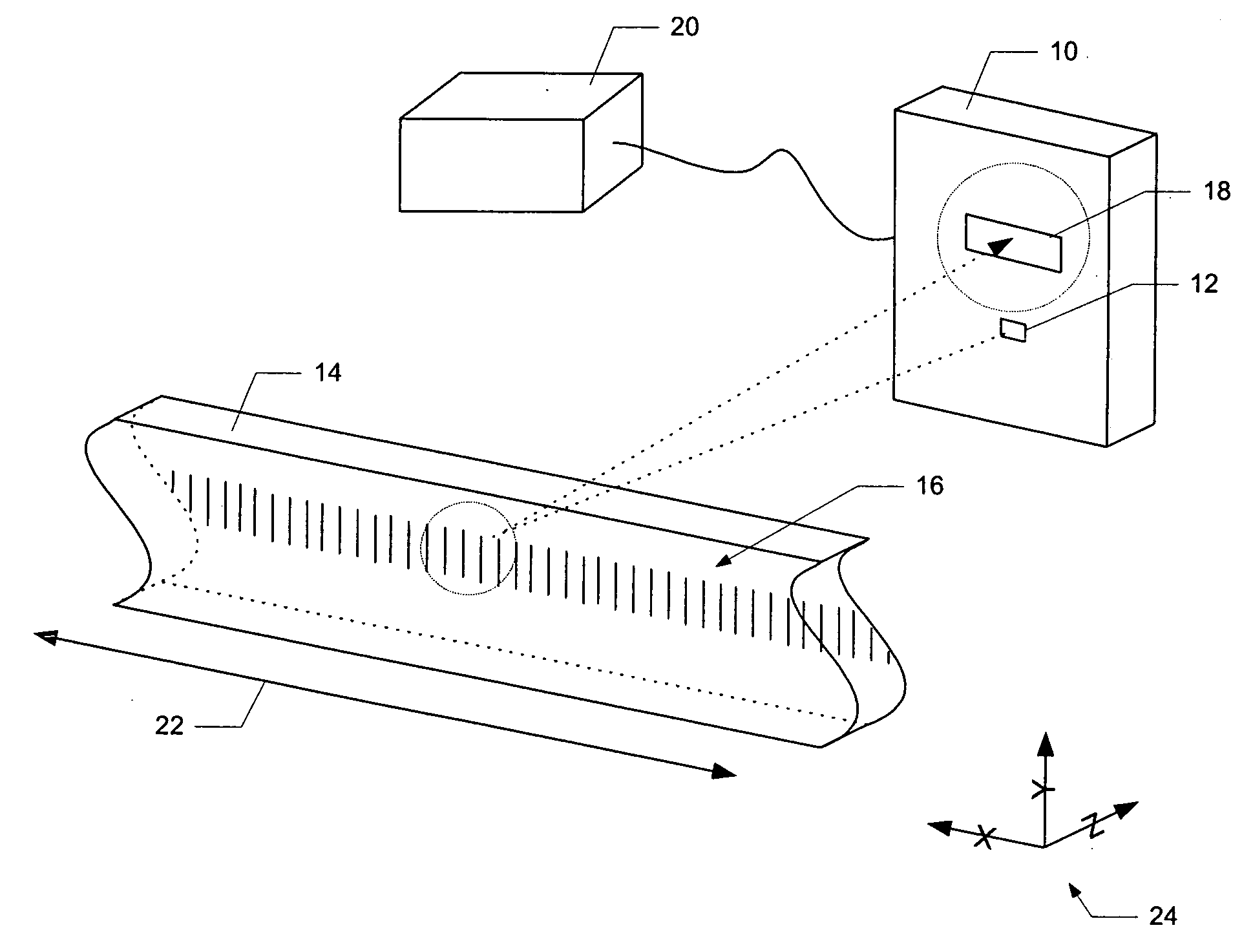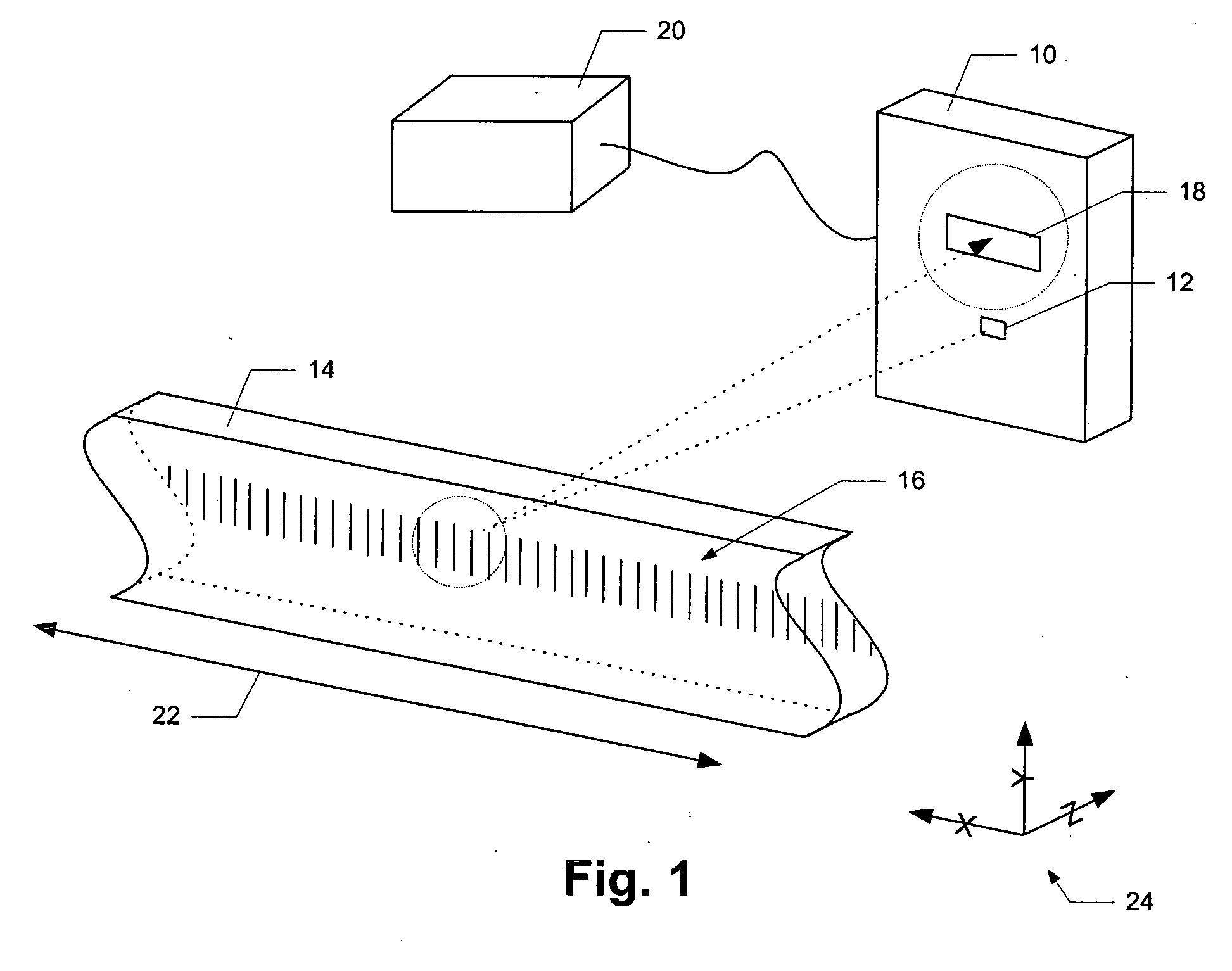Optical encoder having slanted optical detector elements for harmonic suppression
a detector element and optical encoder technology, applied in the field of optical position encoders, can solve the problems of incongruity in the width of the detector element t/3, unsuitable for all applications, and discourage the use of the detector element, so as to improve the alignment tolerance, improve the operation effect, and improve the tolerance of contamination
- Summary
- Abstract
- Description
- Claims
- Application Information
AI Technical Summary
Benefits of technology
Problems solved by technology
Method used
Image
Examples
Embodiment Construction
[0019] In FIG. 1, sensor apparatus 10 is installed as part of a reflective, diffractive optical encoder. A source 12 illuminates a scale 14 on which a periodic, reflective diffraction grating 16 has been created. Light from the source 12 is reflectively diffracted from the scale 14 toward the sensor apparatus 10, which in the illustrated embodiment includes an optical detector 18. The diffraction grating 16 generates multiple orders of diffracted light which interfere with each other to form an optical fringe pattern (not illustrated) on the detector 18. The samples from the detector 18 are sent to an electronic processor 20 which calculates a fringe phase for each sample.
[0020] The fringe pattern is ideally a sinusoid characterized by a period P. Conceptually, when the scale 14 moves laterally relative to the detector 18 along the direction indicated by line 22, the fringe pattern moves a proportional distance on the face of detector 18. An accurate measurement of the changes in t...
PUM
 Login to View More
Login to View More Abstract
Description
Claims
Application Information
 Login to View More
Login to View More - R&D Engineer
- R&D Manager
- IP Professional
- Industry Leading Data Capabilities
- Powerful AI technology
- Patent DNA Extraction
Browse by: Latest US Patents, China's latest patents, Technical Efficacy Thesaurus, Application Domain, Technology Topic, Popular Technical Reports.
© 2024 PatSnap. All rights reserved.Legal|Privacy policy|Modern Slavery Act Transparency Statement|Sitemap|About US| Contact US: help@patsnap.com










